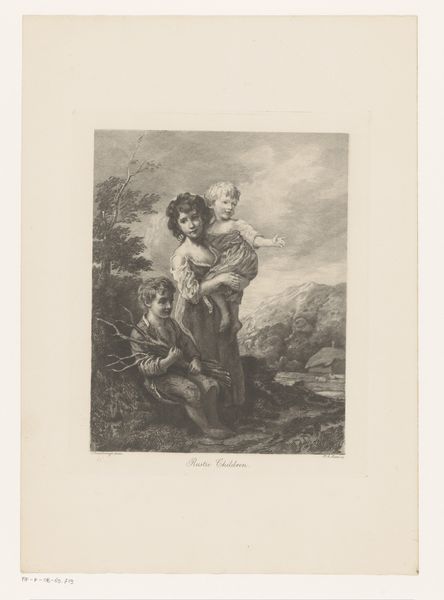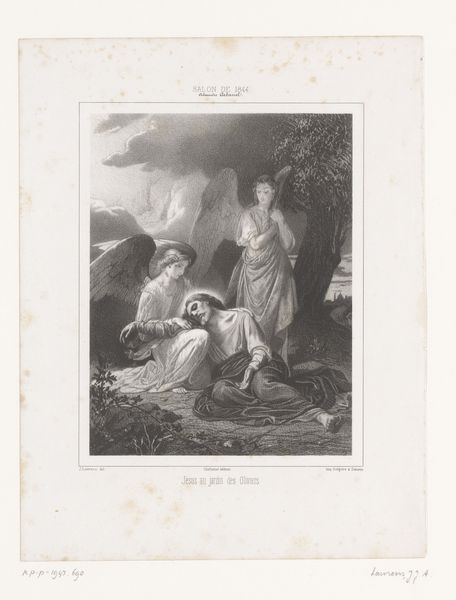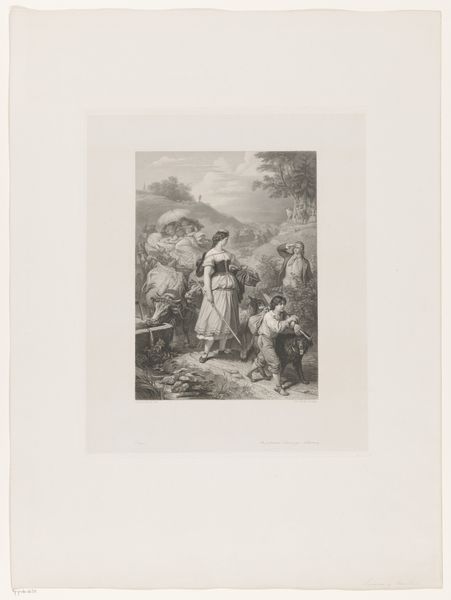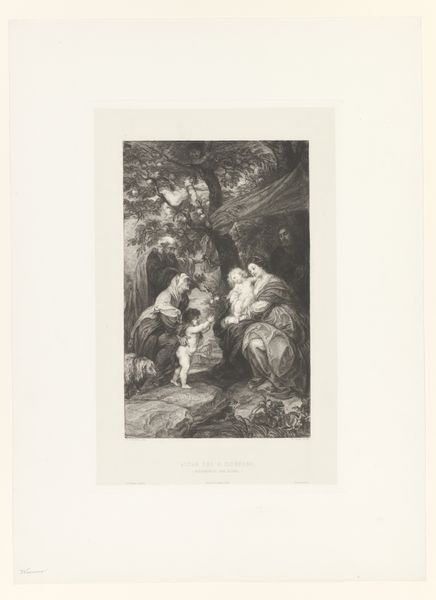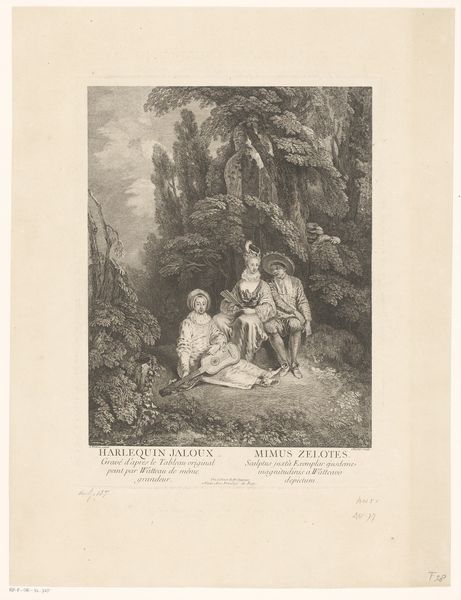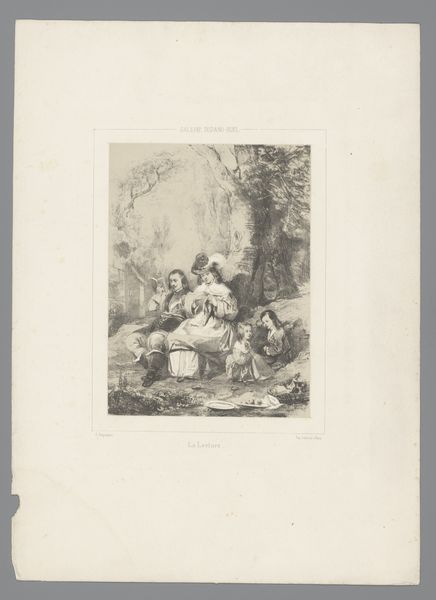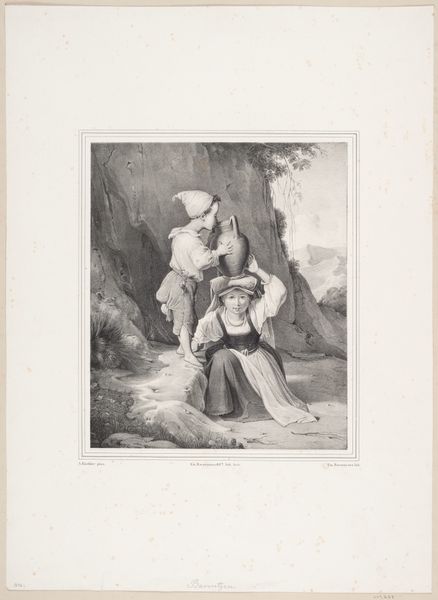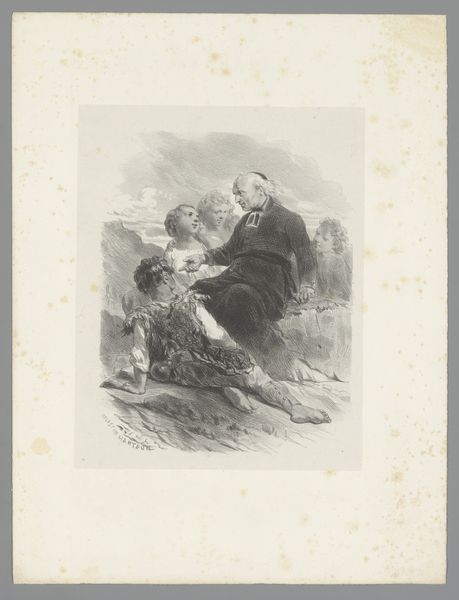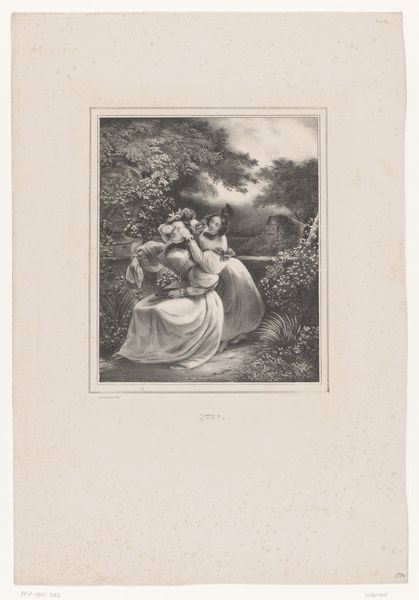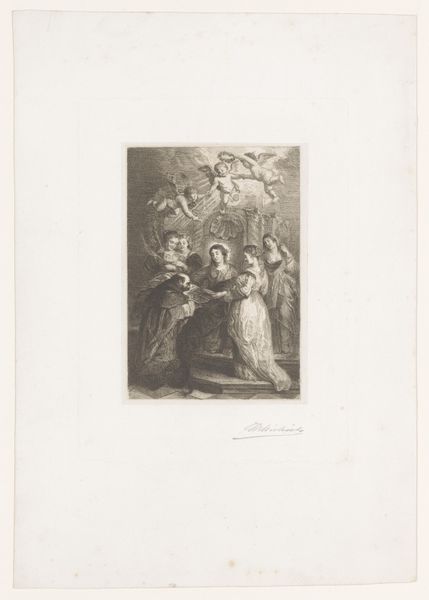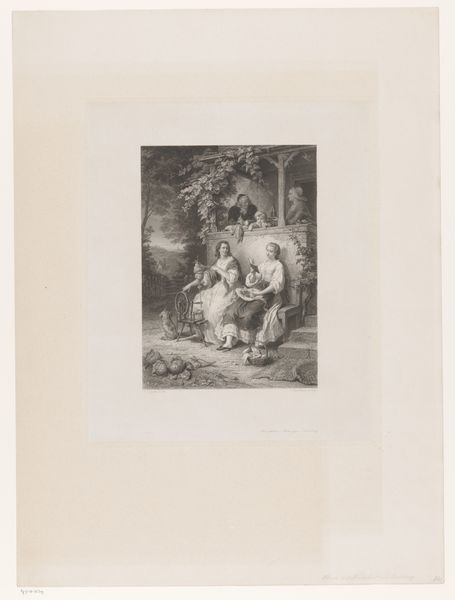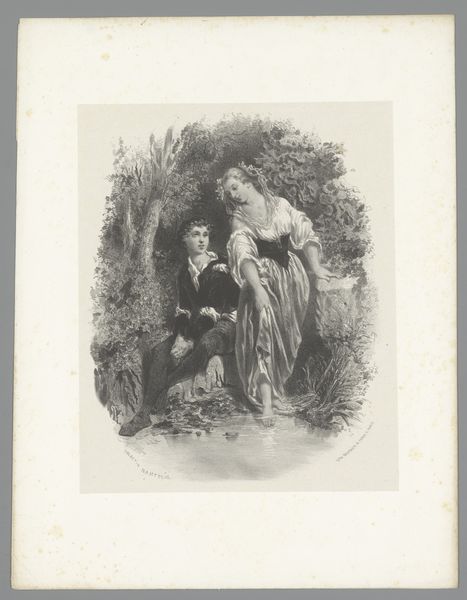
print, etching
# print
#
etching
#
landscape
#
figuration
#
romanticism
#
genre-painting
Dimensions: height 348 mm, width 238 mm
Copyright: Rijks Museum: Open Domain
Editor: This etching, titled "Family in the Dunes," created around 1840 by Johannes Daniël Susan, is surprisingly intimate. It's a domestic scene, yet there's something wistful about it. What do you see in this piece? Curator: What strikes me is how Susan situates this family—likely a fisherman's family given their proximity to the sea and the small sailing ship in the distance—within the harsh realities of their environment. Think about the historical context: The 1840s were a time of social upheaval and economic hardship in the Netherlands. Does this image reinforce or subvert traditional notions of family and domesticity, considering that backdrop? Editor: I guess it's both? There’s a tenderness in the way the mother interacts with the child, but the rough clothing and barren landscape suggest a difficult life. The Romantic style seems to emphasize that tension. Curator: Precisely! Consider the gendering of space here. The women are positioned inland, embodying domesticity and care, while the subtle, yet very much present, reference to the sea reminds us of the labor of men. How might we interpret that relationship between gender, labor, and the Dutch landscape in the context of 19th-century societal roles? Is it a critique, a celebration, or simply a reflection? Editor: I never thought about the symbolism of the landscape itself. Now I see how the work plays with societal expectations. Curator: These images were often circulated as prints, reaching a wide audience. Understanding the visual culture of the time helps us unravel how artists like Susan negotiated those complex social dynamics. Editor: I've learned to see art in a historical context, beyond face value. It reveals narratives about the intersectionality of gender, society, and class in the Dutch landscape of that time. Curator: And it's a dialogue that continues today, challenging us to question what we see and whose stories are being told.
Comments
No comments
Be the first to comment and join the conversation on the ultimate creative platform.
